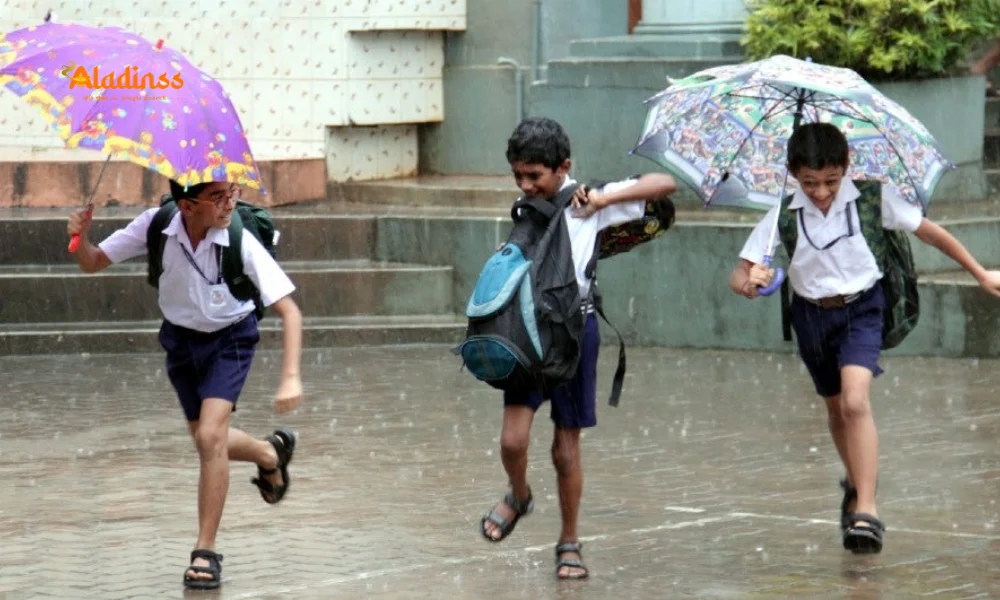Tamil Nadu Schools Closed Today as Heavy Rain Batters 19 Districts — IMD Issues Red Alert

Tamil Nadu School Closures: 19 Districts on Alert Amid Heavy Rain
Heavy rainfall triggered by a low-pressure area in the Bay of Bengal has led to school closures across 19 districts in Tamil Nadu on October 22, 2025. A red alert for extremely heavy rainfall has been issued for eight districts, including Ramanathapuram, Pudukkottai, and Cuddalore, while Puducherry and Karaikal also face severe weather warnings. District collectors have declared holidays for schools and colleges in multiple regions, prioritizing student safety as the Northeast Monsoon intensifies, causing widespread disruptions across the state.
The decision to close educational institutions comes as Tamil Nadu braces for continued downpours, with authorities taking proactive measures to mitigate risks of flooding and waterlogging. Chennai, among other districts, has shuttered schools, while 12 districts have extended closures to colleges, reflecting the severity of the weather conditions.

Red Alert Issued for Eight Districts
The Regional Meteorological Centre (RMC) in Chennai has issued a red alert for eight districts—Ramanathapuram, Pudukkottai, Thanjavur, Thiruvarur, Nagapattinam, Mayiladuthurai, Cuddalore, and Villupuram—due to forecasts of extremely heavy rainfall on October 22, 2025. Puducherry and Karaikal are also under red alert, signaling a high risk of flooding and other weather-related disruptions. The alerts stem from a low-pressure system in the Bay of Bengal, which has intensified the Northeast Monsoon’s impact across Tamil Nadu’s coastal regions.
Meteorologists have warned that the heavy rainfall could persist, with coastal areas particularly vulnerable to severe weather conditions. Authorities are closely monitoring the situation, urging residents to stay indoors and avoid unnecessary travel to ensure safety during this period of intense monsoon activity.
School and College Closures Across 19 Districts
In response to the heavy rain warnings, district collectors across Tamil Nadu have declared holidays for educational institutions. Schools in 19 districts, including Chennai, Pudukkottai, Salem, Tiruppur, Karur, Perambalur, and Namakkal, are closed on October 22. Additionally, 12 districts—Villupuram, Kallakurichi, Mayiladuthurai, Thanjavur, Thiruvarur, Trichy, Sivaganga, Tiruvallur, Chengalpattu, Ranipet, Cuddalore, and Kanchipuram—have extended closures to both schools and colleges.
In Puducherry and Karaikal, schools and colleges have also been shut down as a precautionary measure. The widespread closures reflect the government’s commitment to prioritizing student safety amid the Tamil Nadu school closures triggered by the ongoing monsoon crisis.
Impact of the Northeast Monsoon
The Northeast Monsoon, which typically brings heavy rainfall to Tamil Nadu between October and December, has been particularly intense this year. The formation of a low-pressure area in the Bay of Bengal has amplified rainfall, leading to waterlogging, traffic disruptions, and flood risks across multiple districts. Coastal areas, in particular, are experiencing severe impacts, with the RMC forecasting continued heavy rainfall throughout the week.
The monsoon’s intensity has strained urban infrastructure, particularly in cities like Chennai, where waterlogged roads have caused significant delays. Rural areas are also affected, with farmers facing potential crop damage due to excessive rainfall. The government is working to address these challenges through coordinated disaster response efforts.
Government Response and Preparedness
Tamil Nadu’s state government has taken proactive steps to manage the monsoon crisis. District collectors are working closely with disaster response teams to monitor flood-prone areas and provide relief to affected communities. Emergency shelters have been set up in vulnerable districts, and the National Disaster Response Force (NDRF) and State Disaster Response Force (SDRF) are on standby to assist with rescue operations.
Chief Minister M.K. Stalin and Deputy Chief Minister Udhayanidhi Stalin have been actively involved in overseeing preparedness measures. Inspections of drainage systems and flood defenses are underway to minimize the impact of waterlogging and flooding. The government has also urged residents to follow weather advisories and report emergencies to local helplines.
Safety Measures for Students and Families
The closure of schools and colleges across Tamil Nadu is a critical step to ensure the safety of students and staff. District collectors have emphasized the importance of avoiding travel during heavy rainfall, as waterlogged roads and poor visibility pose significant risks. Parents have been advised to keep children indoors and stay updated on weather alerts issued by the RMC.
In districts like Chennai and Cuddalore, where flooding is a recurring issue, authorities are distributing essential supplies to families in low-lying areas. Schools and community centers are being repurposed as temporary shelters to accommodate those displaced by the heavy rainfall. These measures aim to protect vulnerable populations and minimize disruptions caused by the monsoon.
Challenges of Urban Flooding
Urban flooding remains a significant challenge in Tamil Nadu, particularly in densely populated cities like Chennai. The heavy rainfall has overwhelmed drainage systems, leading to waterlogged streets and traffic congestion. In some areas, residents have reported flooded homes and businesses, highlighting the need for improved urban planning and infrastructure.
The state government has invested in upgrading drainage systems in recent years, but the intensity of the 2025 Northeast Monsoon has exposed gaps in these efforts. Authorities are now focusing on clearing blocked drains and pumping out water from affected areas to restore normalcy. Long-term solutions, such as sustainable urban development and flood-resistant infrastructure, are critical to addressing these challenges.
Impact on Rural Communities
While urban areas face significant disruptions, rural communities in Tamil Nadu are also grappling with the effects of heavy rainfall. Farmers in districts like Thanjavur and Thiruvarur, key agricultural hubs, are at risk of crop damage due to flooding. The state government is working to provide relief to affected farmers, including financial assistance and support for replanting crops.
Rural infrastructure, such as roads and bridges, is also under strain, with some areas becoming inaccessible due to flooding. The government has deployed teams to repair damaged infrastructure and ensure connectivity to remote regions. These efforts are crucial to supporting rural communities during the ongoing monsoon crisis.
Community Resilience and Support
Tamil Nadu’s communities have shown remarkable resilience in the face of the monsoon’s challenges. Local organizations and volunteers are assisting with relief efforts, distributing food, water, and medical supplies to those in need. Social media platforms are being used to share real-time updates on road conditions, shelter locations, and emergency contacts, helping residents stay informed and safe.
The collective response from communities, combined with the government’s proactive measures, has helped mitigate the immediate impacts of the heavy rainfall. However, sustained efforts will be needed to address the long-term effects of the monsoon and ensure that Tamil Nadu is better prepared for future weather events.
Looking Ahead: Building Climate Resilience
The 2025 Northeast Monsoon has underscored the need for Tamil Nadu to invest in climate-resilient infrastructure and early warning systems. As extreme weather events become more frequent due to climate change, the state must prioritize sustainable solutions to protect its residents and economy. Upgrading drainage systems, strengthening flood defenses, and promoting eco-friendly practices are essential steps toward building resilience.
Public awareness campaigns can also play a key role in encouraging residents to prepare for monsoon-related challenges. By fostering collaboration between government agencies, communities, and environmental organizations, Tamil Nadu can create a robust framework for managing future weather crises and ensuring the safety of its people.
Comment / Reply From
No comments yet. Be the first to comment!











